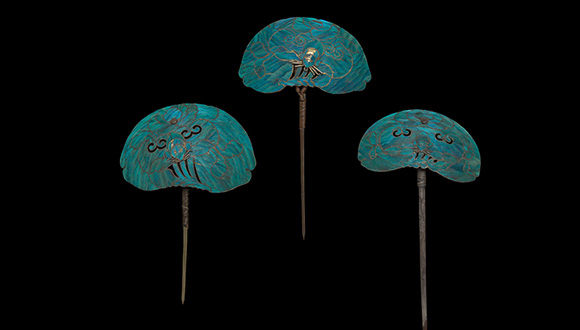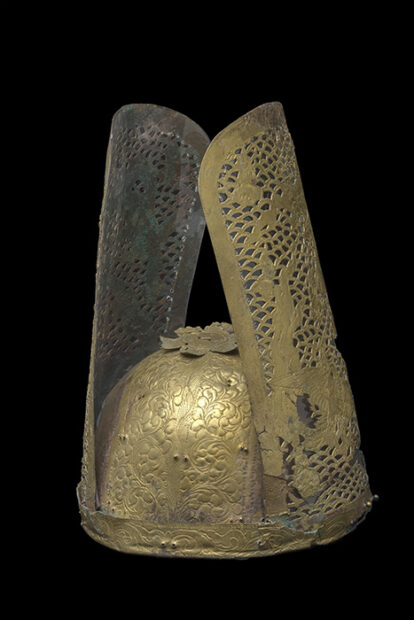
Hairpins, China, Qing dynasty (1644-1911). Silver and kingfisher feather. 5 ¾” to 5 ¼”x3 ¼” by 3 1/8.” Purchased with funds provided by the Bessie Timon Endowment Fund.
The San Antonio Museum of Art announced this week a major addition to its already expansive collection of art from China. The new acquisitions include a gilt crown and plaque from the Liao dynasty (907–1125), along with a set of jade belt plaques, and a set of embellished gilt silver hairpins from later dynastic periods.
“The artworks announced today capture the incredible artistry and skill of Chinese craftsman from across history, while also illuminating the importance of these objects—and the imagery and material they hold—to Chinese culture and society,” SAMA’s Associate Curator of Asian Art, Shawn Yuan, says in a statement. “We are delighted to enhance the Museum’s Chinese art holdings with these stunning works, which further our ability to share narratives and develop understanding of Chinese material culture through time.”

Crown, China, Liao dynasty (907-1125). Gilt bronze. H. 11 7/16.” Purchased with funds provided by the Bessie Timon Endowment Fund.
Over the last few years, Yuan has helped oversee greater collaboration between SAMA and Chinese institutions, as well as a more representative and inclusive approach to building the museum’s permanent collection. He curated last year’s special exhibition Exquisite Adornment, which prominently featured metalwork from the Miao minority in southwestern China. These pieces have been promised to the museum by longtime supporters Elizabeth and Robert Lende. “SAMA has been working hard to continuously grow its esteemed Asian collection, by including more cultures, especially those underrepresented,” Yuan told Glasstire last year.
The new acquisitions include a mortuary crown for a noblewoman of the semi-nomadic Khitan people, who occupied present-day China and Mongolia, along with the first major jade work to enter the collection. “The new acquisitions are part of an ongoing effort to enhance under-represented areas within the Museum’s wider Asian art collection such as metal work and jade,” SAMA states.


